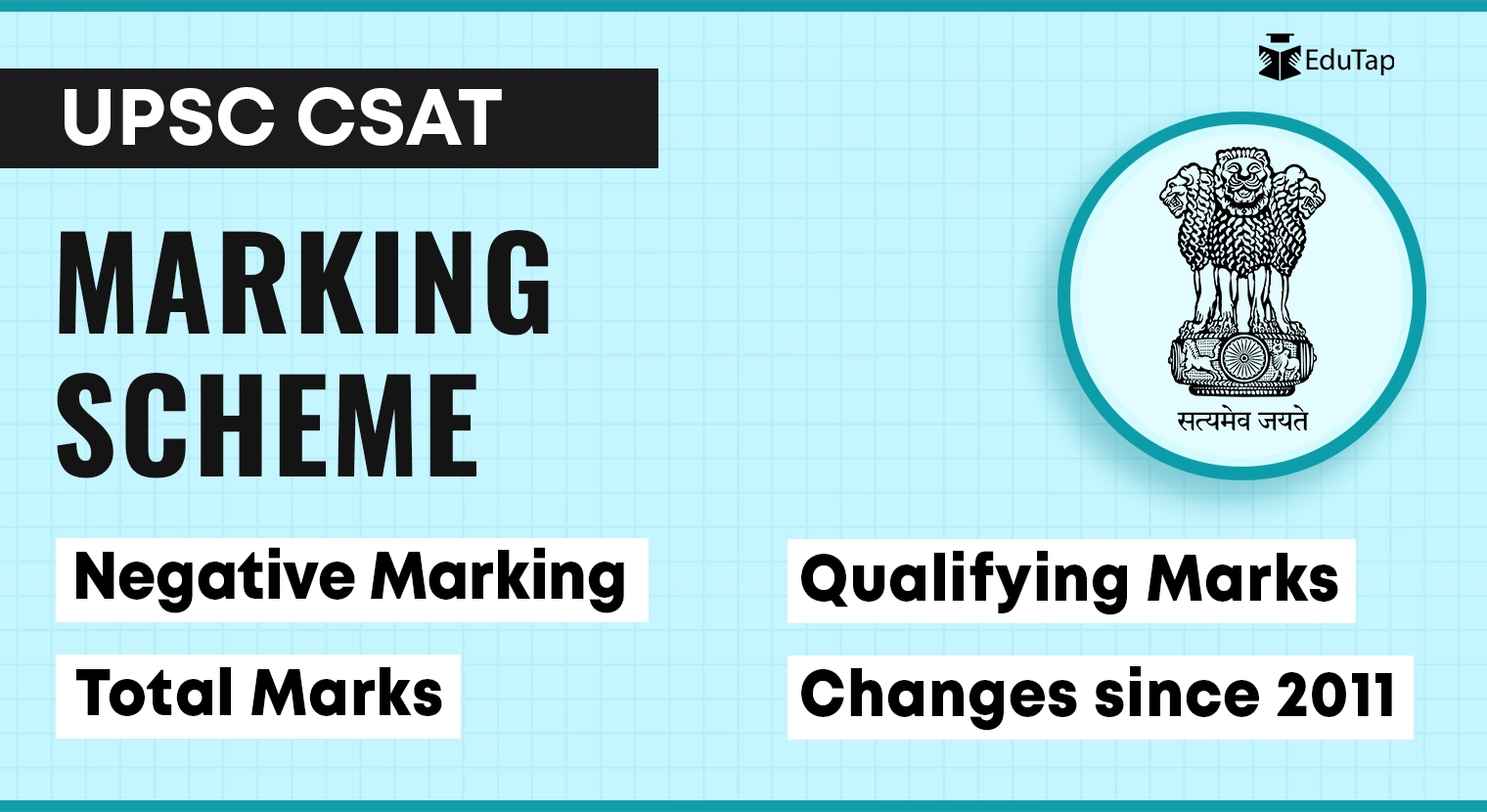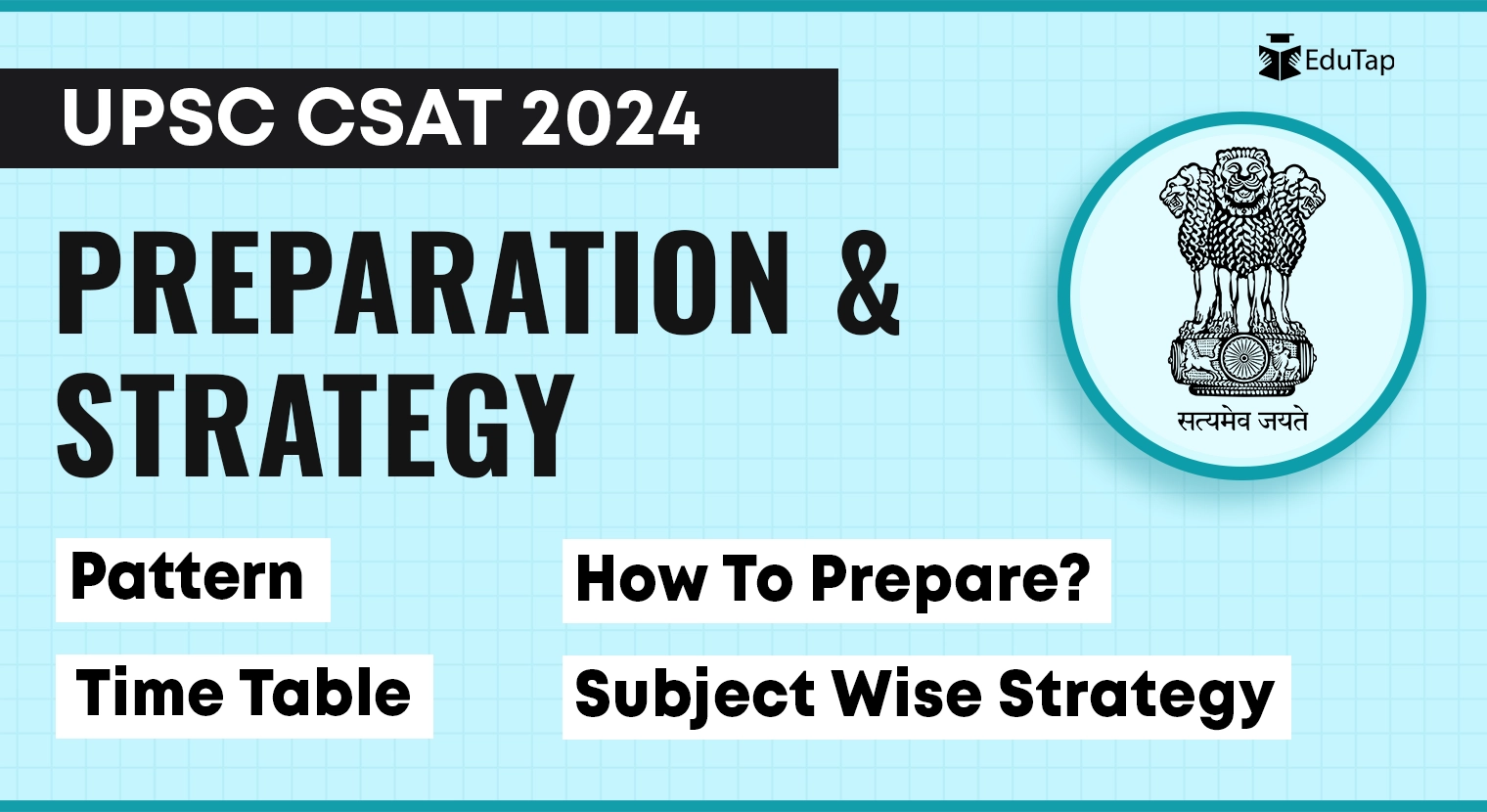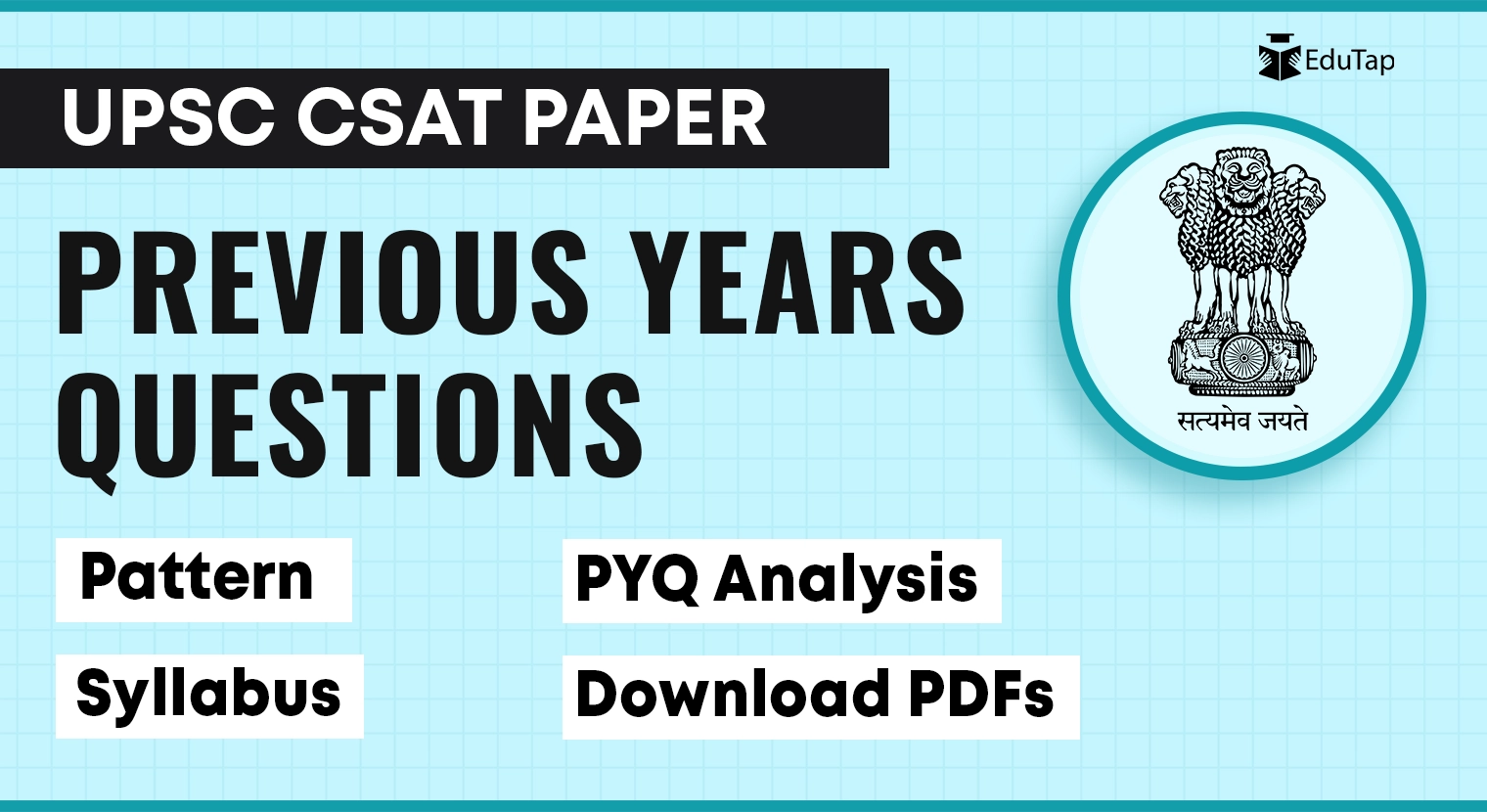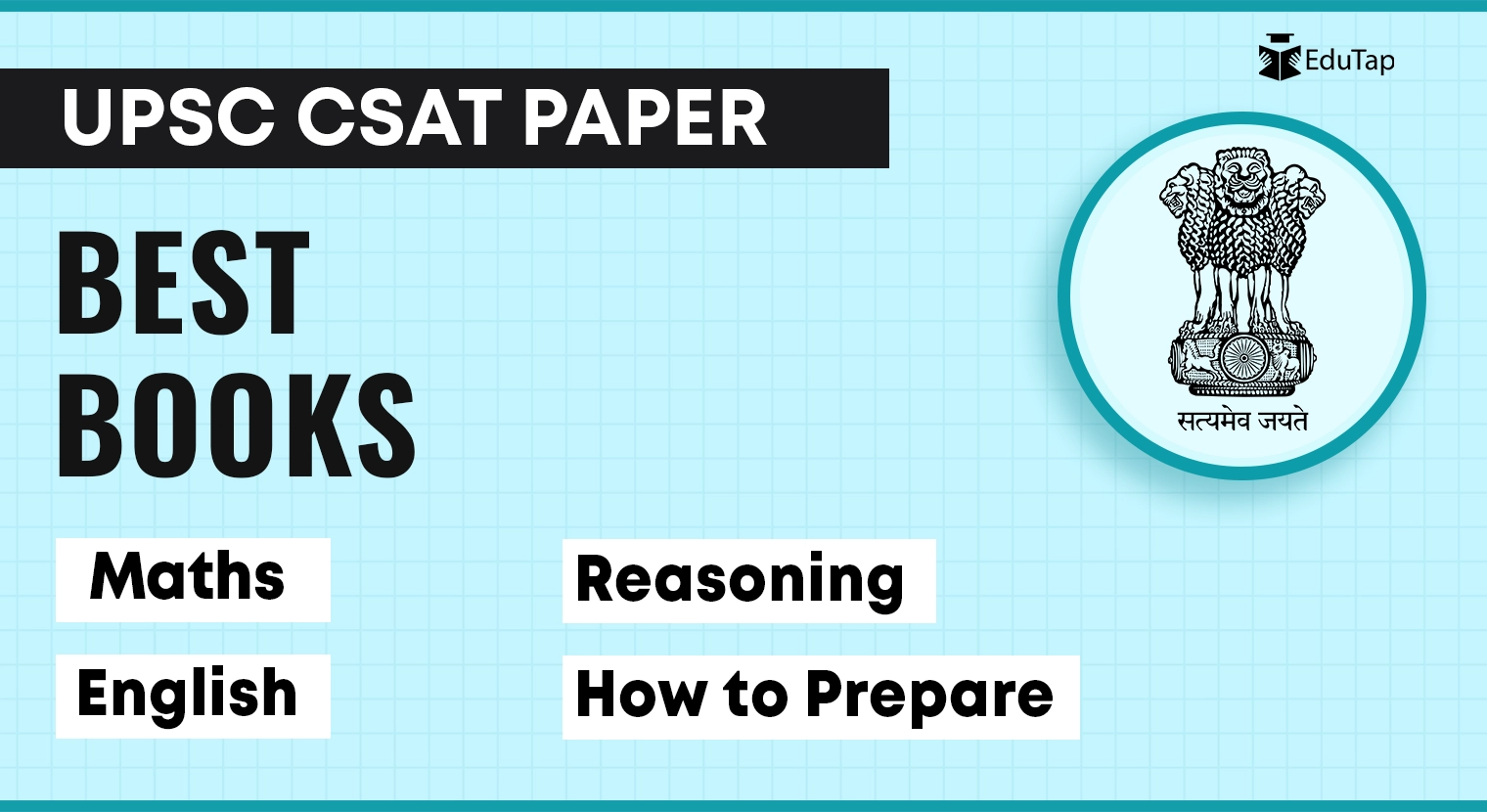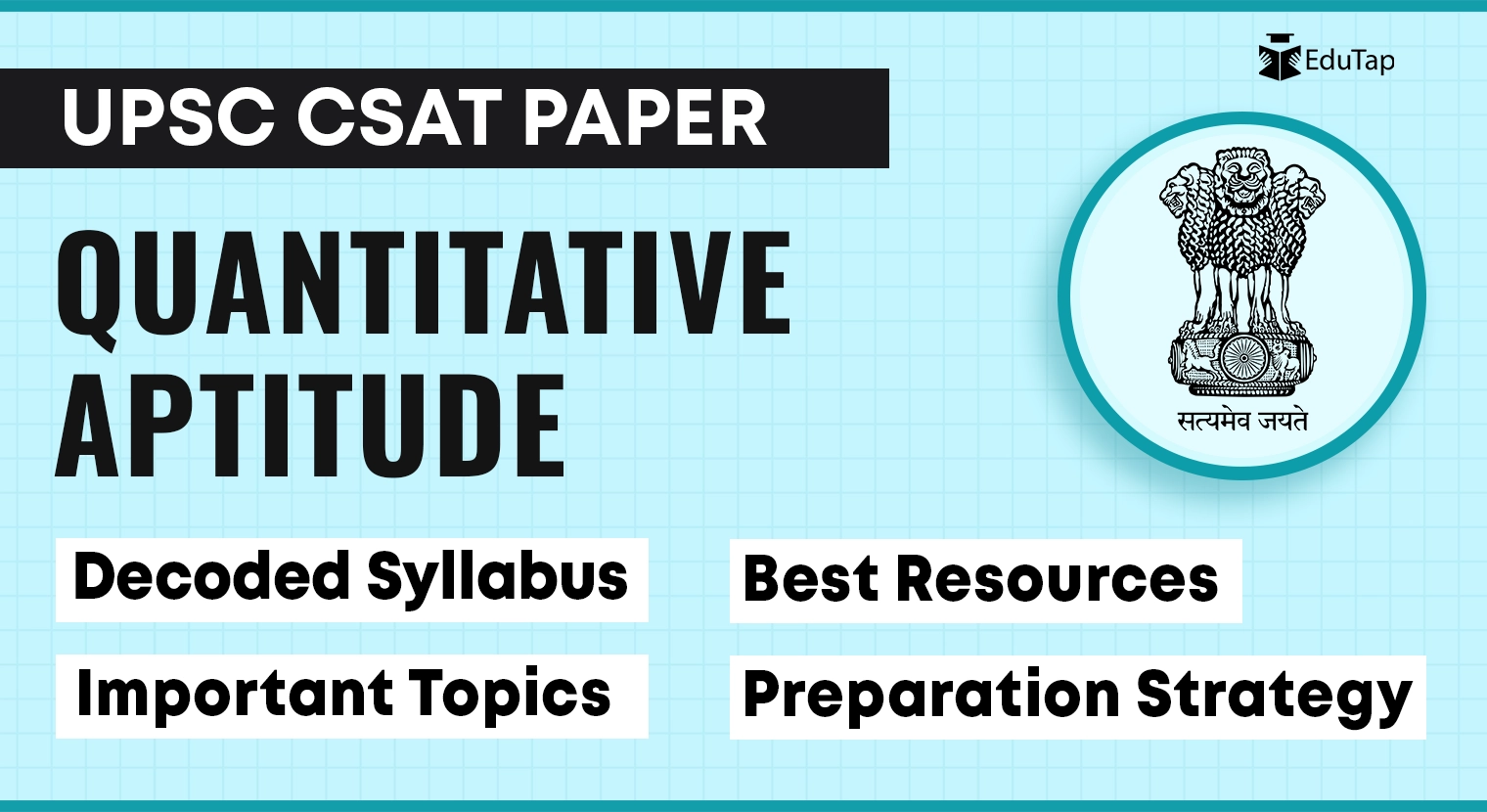Understanding the UPSC CSAT marking scheme is crucial for aspirants preparing for this paper. It not only provides clarity on the marks required to qualify the UPSC CSAT paper but also influences the strategic choices aspirants make during the exam preparation.
In this article, we’ll discuss the details of the marking scheme, shedding light on the total number of questions, marks allotted to each question and negative marking for every wrong answer.
UPSC CSAT Marking Scheme
Here is the marking scheme for the UPSC CSAT paper:
Total Marks
The total marks for the CSAT or the General Studies Paper 2 are 200.
Total Number of Questions
There are a total of 80 questions. Each question is worth 2.5 marks, making it a total of 200 marks for 80 questions.
Passing Marks
The UPSC CSAT paper is qualifying in nature. It means candidates only need to score passing marks to qualify the exam. With a total of 200 marks available, candidates must score a minimum of 33% marks within 2 hours to qualify this paper. Passing marks come up to 66 marks out of 200.
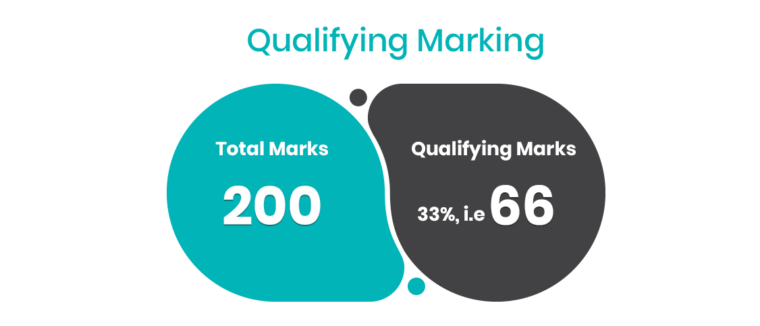
Negative Marking
One-third of the marks allotted to each question, i.e. 0.83 marks, are deducted for each incorrect answer. No marks are deducted if a candidate leaves a question blank on the OMR sheet.

Time Duration
Candidates have a total of 120 minutes (2 hours) to complete the CSAT Paper, also called General Studies Paper 2. During this time, candidates must answer multiple-choice questions (MCQs) that cover various areas such as Maths, Reasoning, English, Decision-making, and Data interpretation. Effective time management is crucial to ensure that questions are attempted within the allocated time to score at least 66 marks.
Important note: There is no sectional timing in the CSAT paper.
For your easy understanding, we have provided the above-mentioned information in a table form below.
| UPSC CSAT Marking Scheme | |
| Total Number of Questions | 80 |
| Total Marks | 200 |
| Per Question Marks | 2.5 |
| Total Time | 2 Hours |
| Negative Marking | 1/3rd, i.e. 0.83 marks |
| Passing Marks | 33%, i.e. 66 marks |
| Sectional Timing | No |
Now that you have understood the UPSC CSAT paper’s marking scheme, let’s look at the number of questions you have to attempt to qualify the CSAT paper.
How Many Questions Should You Attempt To Qualify CSAT Paper 2?
To calculate the minimum number of questions that an aspirant must attempt to qualify the CSAT paper, let’s take four students and their respective attempts in the CSAT paper.
See table below:
| Minimum Number of Questions To Qualify CSAT Paper | ||||
| Student | No. of Questions Attempted | Right Answers | Wrong Answers | Result |
| 1 | 26 | 26 | 0 | Not Qualified |
| 2 | 27 | 27 | 0 | Qualified |
| 3 | 46 | 31 | 15 | Not Qualified |
| 4 | 40 | 30 | 10 | Qualified |
Student 1
If a candidate attempts only 26 questions and answers all of them correctly, the score will be 65 marks. You can see that even after attempting all 26 questions correctly, the student does not qualify the CSAT paper.
Student 2
If a candidate attempts 27 questions and answers all of them correctly, the score will be 67.5 marks. They will be considered qualified as the qualifying marks for the CSAT paper is 66.
So, 27 is the minimum number of questions a candidate must attempt to qualify the CSAT Paper 2, provided all of them are correct.
However, this represents an ideal scenario that rarely aligns with reality. It is almost impossible to answer questions with 100% accuracy. We have to consider the fact that a few questions will be attempted incorrectly which will result in negative marks for those questions.
Lets take two more student cases below that illustrate the above.
Student 3
If a candidate attempts 46 questions and gives 31 correct and 15 wrong answers, their total will be 65.05. As you can see, despite attempting over half of the total questions, the candidate fails to qualify the CSAT paper due to a high number of wrong answers.
Student 4
If a candidate attempts 40 questions and gives 30 correct and 10 wrong answers, their total will be 66.7. In this case, the student attempts only half of the total questions but with fewer incorrect answers. As a result, the candidate successfully qualifies the CSAT paper.
As you know the UPSC CSAT paper is of a qualifying nature, it is important to understand that you need to attempt a focused set of questions with high accuracy. To accomplish this, students must identify the important topics.
Moreover, the CSAT paper includes questions of varying difficulty levels, including easy, moderate, and difficult ones. Therefore, it’s also imperative for students to attempt the easy and moderate questions, which, when attempted correctly, lead to a successful qualification in the CSAT paper.
Now that you are familiar with the number of questions you should attempt to qualify the CSAT, let’s take a look at a brief history of the CSAT and the changes since its introduction.
A Brief History of CSAT
CSAT, also known as UPSC Prelims General Studies Paper 2, was introduced as a major reform in the UPSC examination pattern in 2011. Here’s a brief history of CSAT:
Before CSAT
Before the introduction of the CSAT, the UPSC preliminary exam consisted of two papers:
- Paper I: General Studies.
- Paper II: One subject to be selected from the list of optional subjects.
Introduction of CSAT in 2011
The UPSC introduced CSAT in 2011 as a Paper 2 alongside the General Studies Paper 1 to make the prelims more objective and assess the aptitude of aspirants. This marked a significant change in the examination pattern.
CSAT Structure from 2011-2014
From its introduction in 2011 till 2014, the marks of both General Studies Paper 1 and Paper 2 (CSAT paper) were added to calculate the cut-off marks for the UPSC Prelims exam.
Controversy and Concerns
The introduction of CSAT was met with criticism and raised concerns. Some aspirants believed the paper was biased against candidates with specific educational backgrounds. This controversy led to protests and calls for removing the CSAT paper 2.
Changes and Reforms in 2015
Addressing the concerns raised by aspirants, the UPSC implemented changes in 2015. The alteration involved making CSAT General Studies Paper 2 a qualifying paper.
It implies that the marks obtained in this paper would not be considered in the calculation of the prelims exam cut-off.
Nevertheless, candidates are required to secure a minimum of 66 marks (33%) out of the total 200 marks to qualify the CSAT paper.
Conclusion
A candidate must score at least 66 marks (33%) out of 200 within 2 hours to qualify the CSAT paper. Remember, each wrong answer has a 1/3rd (0.83) negative marking. Moreover, understanding how many questions you should attempt to qualify the paper can help you strategically plan your approach to the CSAT.
FAQs
No, there are no sectional passing marks in the CSAT. The overall marks in the CSAT are considered to qualify the paper.
You can calculate your estimated score by adding +2.5 marks for each correct answer and subtracting -0.833 marks for each incorrect answer. Make sure to score above the qualifying marks for CSAT, i.e. 66.
If you choose not to answer a question, you will neither gain nor lose any marks. It is advisable not to attempt a question if you are unsure of the correct answer.
It is recommended to be selective in the CSAT. Due to the negative marking system, attempting questions without confidence can reduce overall marks. It is best to focus on questions you are sure about.
It is essential to focus on accuracy to maximize your marks. Attempt questions that you are confident about, and do not guess randomly, as negative marks can harm your score. Practice solving previous years’ papers to better understand the CSAT pattern.
